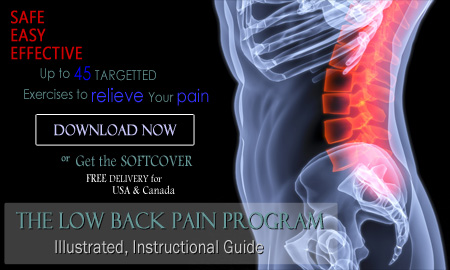How to Relieve Back Pain From Standing
By Sherwin Nicholson | May 1, 2020
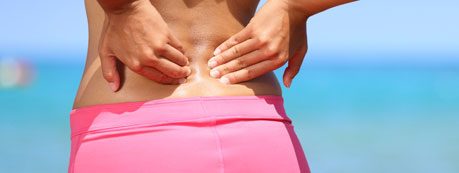
The Deep Squat Rest exercise will ease your pain quickly
If you have to stand for long periods of time, you are no stranger to lower back pain. We all have to but we don’t know how to keep the discomfort away.
Are you feeling a low dull ache in the base of your spine? Do you need to sit down a lot to feel better?
In many cases, the pain you have from standing is from developing an excessive anterior pelvic tilt. This happens when your pelvis is tilting too far forward, causing an exaggerated lumbar curve. This causes a severe lumbar disc imbalance, pinching of the disc, risk of bulge, herniation or degeneration.
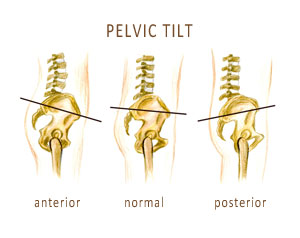
Anterior pelvic tilt is a very common but treatable source of lower back pain.
It also causes your facet joints in your spine to pinch causing you a great deal of irritation and soreness. It’s the discomfort from this pressure that you may be feeling the most. For more information read the article Pain when Standing.
As you continue to stand, your anterior tilt increases and then only hurts more. At some point, you simply find it hard to stand at all.
What you want to do at this point is to stop this pinch by tilting your pelvis in the opposite direction.
That way you can immediately take the pressure off of your facet joints and discs.
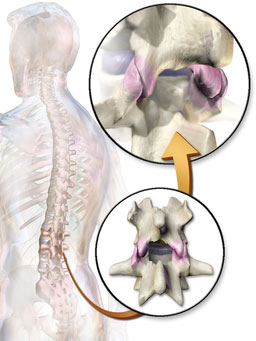
An excessive anterior pelvic tilt can injure your facet joints, causing lower back pain.
The Deep Squat Rest will help you
It is illustrated below from Exercise #1 from the Limited Mobility Exercises (See Table of Contents).
It helps to reduce pain by:
- Reducing the anterior pelvic tilt that is produced from standing (disc pressure balance).
- Opening and stretching the hip joint and hip muscles (hip and pelvic mobility, relieve hip tightness).
- Reducing the excessive S-curve in the lumbar region (reduces a risk of facet joint pain and wear).
- Strengthens the lower abdominal muscles (counter anterior pelvic tilt, reduce uneven disc pressure).
First of all, it is important to LIMIT the amount of time standing and to take breaks from extended periods of standing (every 25-30 minutes for 1-2 minutes).
If you must stand for a long time, rest one foot on a short support such as a small step to elevate the knee and to reduce the anterior pelvic tilt.
This exercise should be done daily and during any of your breaks. (It is important to have consent from your family doctor before any routine such as the Deep Squat Rest.)
The Deep Squat Rest Method
Step 1: Stand upright with feet shoulder width apart.
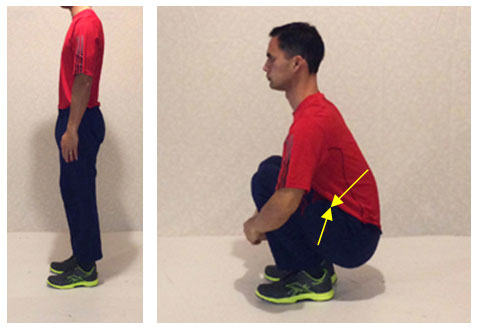
Step 2: Slowly lower your body to a full squat position while keeping your upper body vertical.
Step 3: As you come lower, bring your belly button to your thighs and relax while resting your arms in front. Your knees and legs should be tucked in.
Step 4: Rest in this position for 1 minute or until you feel that your stomach and chest are fully resting on your thighs.
Tip: Contract your abdominals towards your thighs for 10-20 seconds at a time to strengthen them. This helps to counter the anterior pelvic tilt.
If you can’t keep your feet flat on the floor, just put something under each heel to help you. The more you stretch your calves, the easier it will be to get them flat on the floor.
If you find it difficult to maintain your balance and posture while performing this movement, use a stationary support such as a post or a wall to avoid falling forward or backwards.
Use a set of books to squat down upon (as a seat) to your lowest possible level. Maintain this height and allow your joints to relax and settle into this position. Remove a book or two when possible and settle into the next lower level. Resettling time varies on your own degree of tightness. This can take days to weeks. Let your body decide the appropriate time frame.
Note: Initially, you may find that it is not possible to fully lower yourself down due to the limited mobility and tightness in your lower back and hips. It will take time before your body relaxes, your hips open and the lower back becomes less stiff. With time, it will become easier to lower into this position whenever you attempt it.
I practice with this squat because I noticed that many people who are able to do it have very little pain if at all. It’s because it really help with your pelvic and lower back flexibility which we lose over time.
I have put together a really helpful set of exercises like this one to help conquer pain. It is really easy to learn to do and you can do it all at home. It really empowers you because YOU end up learning how to take care of your back the way you should.
If you are ready to commit and are sick of the discomfort, you can download your copy and begin. You can email me anytime for help because I want to help you through it. I have helped thousands so far and have great testimonials to reassure you. – Sherwin (I am only an email away!)
“My favorite exercise is one that helps deal with standing pain. It is the Deep Squat Rest. What I like most about this book is that there is a description of what these exercises do and exactly how it helps reduce back pain. It is truly educational and as they say, Knowledge is Power.”
“I can feel that my back is beginning to become less tight. It feels more open and my muscles don’t feel as if they are always clenched.”

